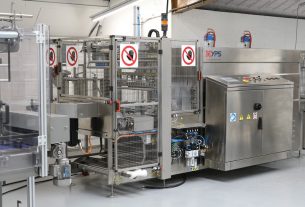Strategies to Address Underfilling & Overfilling, Remain Legal & Reduce Wastage
Billions of packages are being filled in factories around the world – coffee beans into box bottom pouches, whisky into bottles, tablets into medical packs, and many more. Two common challenges that factories often struggle to overcome are underfilling and overfilling. Both issues can lead to significant consequences for businesses, including product defects, recalls, wasted raw materials and packaging, customer dissatisfaction and brand damage.
Systematically Underfilling to Save Cost
When we conducted our research, we found that some factories in other countries deliberately underfill to save on the cost of raw materials. Customers end up paying more than they receive. While most people may overlook this, some choose to take action against such practices.
Two customers in the US filed a lawsuit against a potato chips company for consistently underfilling their chip bags. Although nitrogen gas may contribute to keeping the chips fresh and damage-free during delivery, the net weight of the chips was 58% to 75% lower than the information labelled on the packages. The lawsuit gained widespread coverage on news and social media platforms, leading to even more customer complaints and causing serious damage to the brand.
Unintentional Underfilling
Bringing it closer to the UK manufacturing industry, there were still some underfilling incidents happening, even though Average Quantity has been the law for most pre-packaged consumer goods, produced and sold in the UK since 1979. A leading dairy plant pleaded guilty due to T2 failures within the Weights and Measures Act. This was attributed to inadequate testing procedures that had been in place for over 15 years. Though the underfilling was unintentional, it caused huge damage to the brand and the manufacturer was fined.
We can’t just assume that what was ‘good’ yesterday will be good enough tomorrow. Manufacturers need to revisit every aspect of the manufacturing processes and ask: Why? What? Where? When? Who? and How? And most accept answers like ‘We have always done it this way.’
Overfilling to Ensure Compliance & Protection from Risk
Knowing the consequences of underfilling, many factories decided to take action to be compliant. With the introduction of Average Quantity Law, there was no longer a Minimum Quantity Law for most pre-packaged goods. However, some companies continued to pack to what they called ‘Minimum Quantity.’ This simply meant that they were giving more product away in overfill, whilst gaining no greater legal protection.
Let’s have a look at some numbers. Imagine you are a medium-sized whisky bottler producing, say, 10 million cases per annum. The industry standard for a case is 9 litres (based on 12 x 750ml bottles).
10 million cases at 9 litres per case equals 90 million litres. With just 1ml of overfill on average, this amounts to giving away 90,000 litres per year. As whisky must be matured in oak casks for at least 3 years before it can truly be called whisky, it has to be worth at least £1 per litre at the time of bottling (3 years later). Thus, this must represent a giveaway cost of around £90,000 per annum on such a volume, per average of 1 ml in overfill.
A Few £Millions Spare?
What’s even worse, HMRC could raise an estimate as they are entitled to the excise duty on overfill, which could be traced back through the previous 6 years. Out of interest, the excise duty charged on 40% strength spirit is £11.50 per litre. The extent of risk is realised by doing the maths – 90,000 x £11.50 x 6 = £? Don’t forget this is only based upon overfill of only 1ml per litre.
Several years ago, when an HMRC Inspector was asked for advice of “How much overfill is acceptable?”, the response (knowing nothing of process variation and capability) was “Zero – just get it right gentlemen!”
Strategies to Tackle Underfilling and Overfilling
Being stuck between rising input prices, and little or no opportunity to pass on these rising costs to retailers, manufacturers need to do everything to protect consumers, their financial health and brand reputation. Optimising filling process should not be an option – why give it away?
Preventing underfilling, measuring and controlling overfilling, can significantly reduce production costs. Many manufacturers are unaware that technologies are available to help ensure optimal control of the filling level, with real-time data collection and analysis, feeding back to the management team. Managers can, therefore, take immediate action to ensure legal compliance and reduce the wastage of overfills.
To better control your filling processes, we suggest three key strategies you could implement for your factory:
- Choose a reliable and trusted technology partner with a proven track record to work with to help you remain compliant and reduce giveaway.
- In your choice of partner, make sure that they fully understand and can effectively communicate the benefits of process control and legal compliance.
- Ask your chosen partner to come to your site and prove the claims of 1. and 2.
Why Choose Harford?
In 1979, following the introduction of Average Quantity Law, we introduced our ground breaking weight control software which not only met the demanding legal requirements for Average Quantity, but also combined process capability analysis, so that actions prompted to users were based upon true process/machine capability, rather than simply guesswork. This unique solution has never been improved upon and the well-tested algorithm continues to be the mainstay of our Average Quantity/Process Control system.
 Let’s make 2024 your best year yet! Choose Harford Control for your process control improvement journey. Share your interest by calling +44 (0) 1225 764461 or sending an email to info@harfordcontrol.com.
Let’s make 2024 your best year yet! Choose Harford Control for your process control improvement journey. Share your interest by calling +44 (0) 1225 764461 or sending an email to info@harfordcontrol.com.
Find out more about Harford Weight Control Solutions here: https://www.harfordcontrol.com/solutions/yield-optimisation-systems/fill-optimisation/weight-control-emarking







